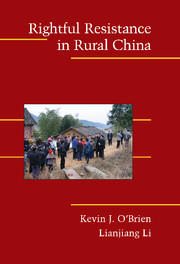Book contents
4 - TACTICAL ESCALATION
Published online by Cambridge University Press: 05 September 2012
Summary
Forms of contention generally have a limited life-span. Even the most creative tactics tend, over time, to lose their power to surprise opponents and stir followers. Tactical escalation offers a means to regain momentum when established techniques of protest no longer create the sense of crises and excitement they once did. As the effectiveness of familiar methods wanes, enterprising activists sometimes turn to even more disruptive acts to demonstrate their commitment, leave their opponents rattled, and mobilize supporters (on the advantages of unruliness, see Andrews, 2001; Gamson, 1990; Guigni, 1999: ⅹⅵ–ⅹⅷ; Tarrow, 1998: 91–105, 163). Although confrontational tactics can at times alienate the public and generate a backlash (Rochon, 1988), they can also help draw newcomers to a cause (Jasper, 1997: 248) while offering leverage to actors who have few other resources (Piven and Cloward, 1992).
Tactical escalation typically involves dramatic gestures and provocations that test the vulnerabilities of one's foes. It may appear in the form of a single tactic (e.g., the sit-in, the mock shantytown, the suffrage parade) that vividly symbolizes injustice and is difficult for the authorities and onlookers to ignore. Or it may arise as a cluster of related innovations (Voss and Sherman, 2000) that reflects a fresh approach to protest and signals that a new “tactical grammar” (Ennis, 1987: 531) is at work.
In rural China, much like it did during the American civil rights movement, revitalizing the repertoire of contention has entailed a radicalization of tactics – a move from humble petitioning to the politics of disruption (McAdam, 1983: 738).
- Type
- Chapter
- Information
- Rightful Resistance in Rural China , pp. 67 - 94Publisher: Cambridge University PressPrint publication year: 2006
- 1
- Cited by

